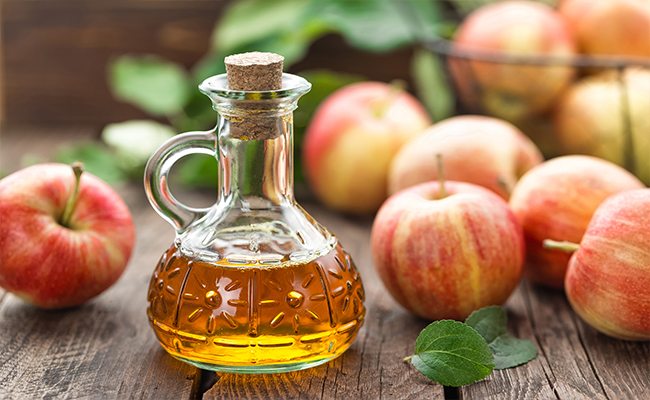Here’s an interesting fact: There are dozens of different types of vinegar. That’s because vinegar can be produced from any food that has natural sugars, which means you could make vinegar from fruits ranging from apples (apple cider vinegar) to blueberries, figs, mango, watermelon, and more. Each vinegar has its own unique taste, and a variety of spices, herbs, or other fruits may be added to enhance the flavor.
Once yeast ferments the sugars into alcohol (the first fermentation), bacteria transform the alcohol into vinegar (second fermentation), and the acetic acid that is present after the second fermentation harbors flavors from the original food and provides the vinegar with its unique taste.
Vinegar has various uses both in the kitchen and out. For example, it can be a key ingredient in salad dressings, allow you to reduce the salt or fat in a recipe, disinfect your countertops, and help manage acid reflux. The number of uses for vinegar may equal or exceed the number of different varieties available!
Types of Vinegars
Here are 7 vinegars, many of which may be familiar to you and a few that may not.
White vinegar (aka distilled vinegar)
This is the most common type of vinegar in North America and one that is not often used in foods except when pickling. This is the type of vinegar you turn to when cleaning and disinfecting floors, counters, appliances, and windows around the house. White vinegar is made from manufactured acetic acid or grain-based ethanol and diluted with water. It is often an ingredient in commercial condiments, such as ketchup and salad dressings, and at home you can add a small amount to milk to create a buttermilk substitute. Otherwise, the sharp, unpleasant taste of plain distilled vinegar doesn’t lend itself to many culinary possibilities.
Apple cider vinegar
This vinegar is made from apple cider and is the second most common type of vinegar in the United States. The recommended culinary uses for apple cider vinegar include salad dressings, condiments, marinades, beverages, and in recipes that call for vinegar in general. But the benefits of apple cider vinegar don’t stop there. It’s easy to find dozens of uses for apple cider vinegar, ranging from relieving acid reflux to whitening teeth, soothing sunburn, toning the skin, cleaning your home, balancing your pH, and many more.
Read about 21 reasons why apple cider vinegar rocks
Rice vinegar
Japan is the birthplace of this typically clear or pale yellow vinegar, which is popular in making sushi. In China, it is common to see both black and red varieties of rice vinegar, which are strong and smoky and sweet and tart, respectively. The mild, delicate version clear vinegar most often seen in the United States is popular in Asian cuisine (e.g., noodle dishes, stir-fry, ginger) and other dishes because of its gentle flavor and it does not alter the color of food. Red rice vinegar is popular in soups while black rice vinegar is a staple ingredient in dipping sauces.
Continue to NEXT PAGE …









